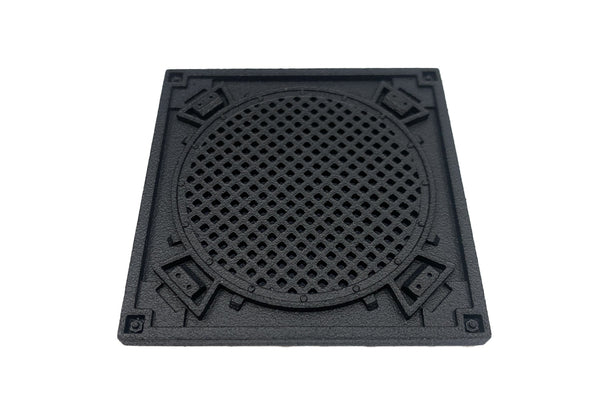Miniart 1:35 - Pz.Kpfw. III Ausf. C
MIN35166
£48.00 GBP
Miniart 1:35 - Pz.Kpfw. III Ausf. C - Plastic Figure Model Kit #35166
The Panzerkampfwagen III, widely known as the Panzer III, was a German medium tank produced by the Daimler-Benz AG in the 1930's. According to the Army Weapons Department plans, the Panzer III was aimed to serve as the main battle tank of the German Panzer divisions. It was meant to fight enemy tank forces with the support of the Panzer IV which was intended to neutralise anti-tank guns.
The Panzer III was able to reach speeds up to 40 km/h by road and 20 km/h off road. Its armament included one 37 mm KwK 36 L/45 cannon and two 7.92mm MG34 machine guns. Compared to its successors, the Ausf. G and Ausf. J, the Panzer III featured a relatively thin armour (15 mm). It had space for five crew members.
When the Soviet T-34 first appeared on the battlefield, the Germans saw the urgent need for a more powerful anti-tank gun. The decision was made to redesign the Panzer IV as it had more potential for further development. The Ausf. C soon became outdated and its production ended in 1943. The tank was deployed in several German campaigns of the early war period including the September Campaign in Poland, the Fall of France and Operation Barbarossa.
The kit contains 1047 plastic parts. It is the first plastic model of the Pz. Kpfw. III Ausf. C.
Box: 380mm x 240mm x 60mm
Additional:
- 1171 total details
- 1047 plastic parts
- 63 photo etched parts
- 11 clear plastic parts
- Decals sheet for 5 options
- Full-colour instruction
- Fully detailed interior of turret
- Crews vision periscopes with clear plastic parts
- All hatches can be assembled open or closed
- Workable chassis and track link
Related Items
Soviet Sniper WW2 1/16th scale
£45.00 GBP
Highly detailed 1/16th or 120mm scale miniature, capturing the uniform and equipment of a WW2 Soviet Sniper. The kit comes with three head configuration options, fur hat with ear flaps known as the 'Ushanka', a head with helmet (2 parts) and a head with a cap known as the 'Pilotka'.
This is ideal for a diorama or bust depicting Soviet Snipers such as Vasily Grigoryevich Zaitsev. Between 10 October 1942 and 17 December 1942, during the Battle of Stalingrad, he killed 225 enemy soldiers. Zaitsev became a celebrated figure during the war and later a Hero of the Soviet Union, and he remains lauded for his skills as a sniper.
Operation Frankton RMBPD Set - WWII Cockle Canoe + Royal Marines
£45.00 GBP
1:35 - Major Herbert George "Blondie" Hasler - Resin kit
Herbert George "Blondie" Hasler was a Lieutenant Colonel of the Royal Marines. In 1942, a 28-year-old Hasler planned and led Operation Frankton. The operation was a commando raid on Axis shipping in the French port of Bordeaux occupied by the Germans. The mission was to attach mines to the hulls of German cargo ships. Three of the five canoes were lost on the way to the port. The surviving crewmen including Hasler reached the port successfully, placed the mines and managed to drown four cargo ships. They then walked 100 miles to a French village where they met with members of the Resistance and started their journey back to England through Spain and Gibraltar. For this operation Hasler was awarded the Distinguished Service Order by King George VI.
One kayak was damaged while being deployed from the submarine, and it and its crew therefore could not take part in the mission. Only two of the 10 men who launched from the submarine survived the raid: Hasler, and his number two in the kayak, Bill Sparks. Of the other eight, six were executed by the Germans and two died from hypothermia.
This product is available in two scales, 1:35 and 1:24 and was painstakingly designed from scratch as a digital model.
The kit includes: 2 x miniatures (Blondie Hasler and Bill Sparks) in their folding Cockle Canoe named 'Catfish' made by Campaign Models (UK).
Now available, while stocks last.
Miniature Diorama Display Base
£9.50 GBP
This highly detailed Diorama base is ideal for mounting one or two figures on display. Small enough to be displayed easily, big enough to provide enough space to set the scene. More styles coming very soon!
Dimensions: 58mm x 58mm x 4mm
1:35 Resin Miniature WWII German Soldier Eastern Front
£15.00 GBP
A detailed single (1x) resin miniature in 1:35 scale, posed to be standing while smoking a cigarette. The kit consists of the following parts:
Head/torso
Helmet
Right arm with MP40
Left arm/hand
Left leg
Right leg
M1931 Bread Bag - with M1931 Field Flask and Mess tin combined
Ammunition Pouch
Spare MP40
Sidearm in holster


























